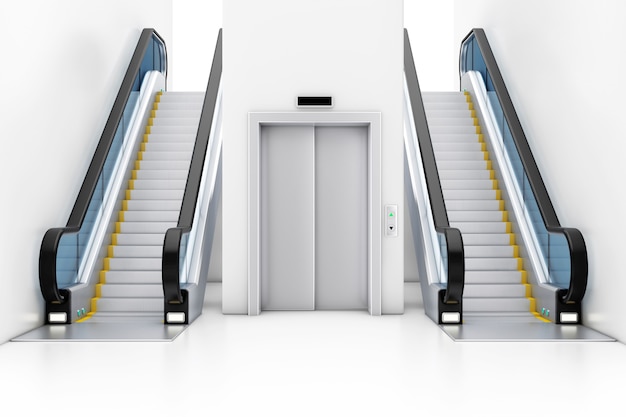Looking Into the Globe of Elevators: Typical Issues Encountered by Various Lift Mechanisms
As we navigate with the vertical transport systems of modern-day buildings, lifts stand apart as a vital element of our lives. Nonetheless, behind their seamless operation exists a world of complex systems that can sometimes come across challenges. From hydraulic elevators to grip systems and machine-room-less designs, each lift type includes its collection of common problems. Understanding these difficulties is critical for guaranteeing the smooth performance of these crucial systems. Let's check out the intricacies that underlie the procedure of elevators and the prospective concerns that can occur, dropping light on the complex internet of lift systems.
Hydraulic Elevators
Hydraulic lifts, commonly liked for low-rise structures, make use of fluid stress to control the movement of the lift vehicle (lift repair companies). This system includes a hydraulic pump pushing oil into a cylinder, triggering the lift to move in the desired direction. While hydraulic elevators are known for their quiet and smooth operation, they do include their own set of typical problems
One common issue with hydraulic elevators is oil leakage. The seals in the hydraulic system can wear out gradually, resulting in oil infiltration. This not just produces a mess however can likewise affect the elevator's efficiency if left unaddressed. Furthermore, issues with the control system, such as malfunctioning valves or a malfunctioning pump, can cause disruptions in the lift's movement.
Normal maintenance and prompt fixings are essential to make sure the smooth functioning of hydraulic elevators. By addressing these usual problems proactively, building proprietors can minimize downtime and guarantee the safety and efficiency of their upright transport system.
Traction Lifts
When considering upright transportation systems in structures, one more usual type apart from hydraulic lifts is the grip elevator. Grip elevators run utilizing a system of ropes and weights that move the lift car by clutching onto the hoist ropes. This system permits smoother and quicker upright transportation contrasted to hydraulic systems.
Among the common concerns faced by grip lifts is rope wear. The continuous activity of the ropes within the traction system can cause tear and put on with time, potentially causing the lift to breakdown or become unsafe for use. Normal evaluations and upkeep of the ropes are necessary to make certain the lift's proper functioning and security.
An additional issue that traction lifts might run into is connected to the control system. Issues with the control system can bring about issues such as unpredictable motion, hold-ups in response times, and even total shutdowns. Regular screening and maintenance of the control system are important to protect against such issues and make certain the lift's dependability.
Machine-Room-Less (MRL) Elevators

Among the essential components of MRL lifts is the compact gearless grip machine that is set up within the hoistway. This machine successfully drives the lift car without the requirement for bulky devices located in conventional grip elevators. In addition, MRL elevators commonly use a weight system to stabilize the automobile, more enhancing their power effectiveness.
Regardless of their benefits, MRL lifts might face difficulties associated with repair and maintenance because of the restricted room for tools installation. Ease of access for servicing elements within the shaft can be restricted, calling for specialized training for specialists. Appropriate maintenance routines and routine examinations are essential to make sure the ongoing smooth procedure of MRL lifts.
Overloading and Weight Limitation Issues
Straining and weight restriction problems are crucial concerns in lift procedures. Elevator manufacturers layout raises with particular weight capacities to make certain traveler safety and tools durability.
When elevators are overwhelmed, it puts too much stress on the motor, wires, and other components, possibly causing breakdowns or breakdowns. Safety devices such as sensors and overload sensing units are in area to avoid elevators from moving if they identify excess weight. In addition, surpassing weight restrictions can result in raised energy usage and wear and tear on the elevator system.
To minimize overloading problems, constructing managers must plainly display weight restrictions click to find out more in lifts and educate passengers on the relevance of adhering to these limitations - lift repair companies. Normal maintenance checks by qualified professionals can also assist make certain that elevators are operating within safe weight parameters. By resolving overloading and weight limit problems proactively, building proprietors can improve lift safety and security and efficiency
Electrical System Failings
Exceeding weight limits in elevators can not only cause mechanical concerns yet also possibly add to electric system failings within the lift infrastructure. Electrical system failures are an essential concern in elevator operation, as they can create unanticipated closures, malfunctions, and even security dangers. One typical electric problem is the getting too hot of parts due to excessive current circulation brought on by overloading the elevator past its ability. This can lead to damage to the control, motor, or circuitry systems, causing expensive repair services and downtime.
Regular maintenance and examinations are important to identify and resolve prospective electric issues quickly, making certain the risk-free and reliable procedure of lift systems. By sticking to weight restrictions and performing routine electrical system checks, structure proprietors can mitigate the Click Here threat of electrical failures in elevators.
Verdict

Hydraulic elevators, usually liked for low-rise structures, utilize fluid stress to control the motion of the elevator car.When taking into consideration vertical transport systems in structures, another typical kind aside from hydraulic lifts is the grip elevator. Grip lifts operate utilizing a system of ropes and weights that move the elevator cars and truck by gripping onto the hoist ropes. Unlike standard lifts that require a different equipment room to house the devices, MRL lifts incorporate most of the elements within the shaft, removing the demand for a committed device area.In verdict, lifts face common problems such as hydraulic breakdowns, grip system failings, and electric system troubles.